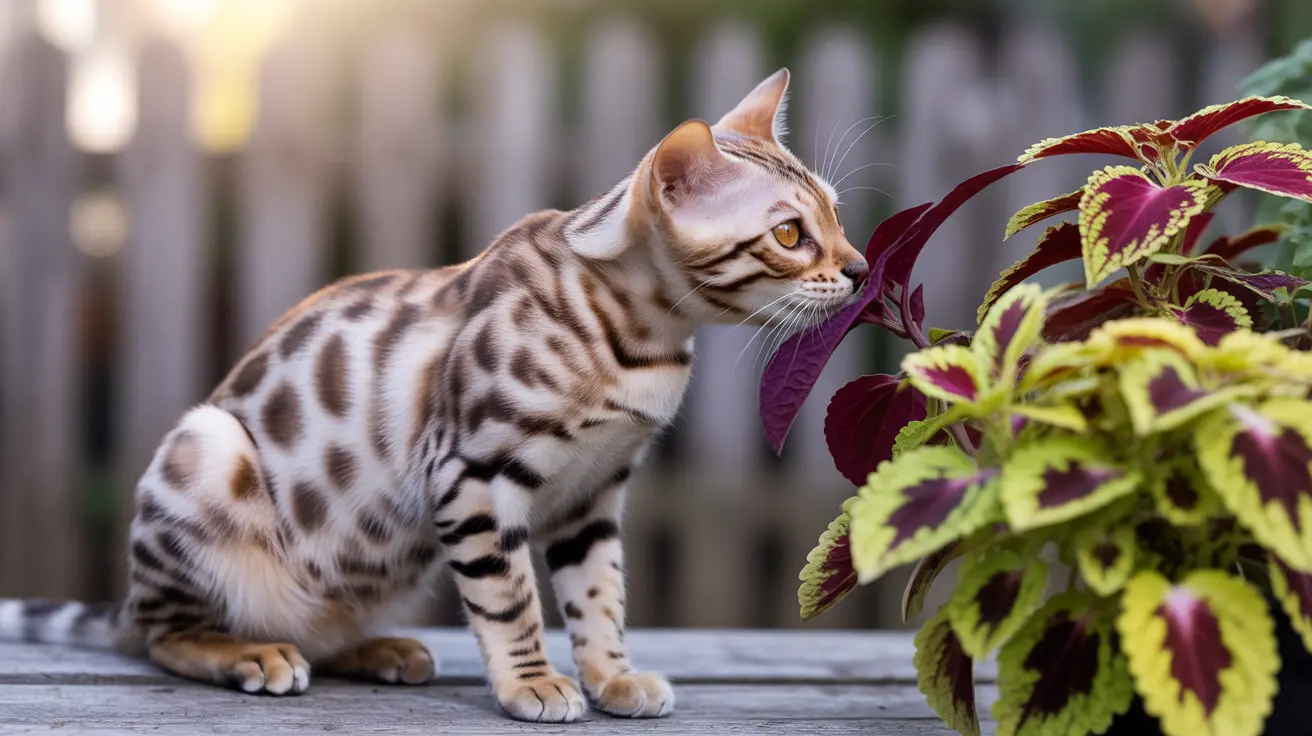Understanding Coleus and Its Toxic Properties
Coleus plants, particularly species like Coleus amboinicus (also known as Indian Borage or Spanish Thyme), contain potentially harmful compounds throughout their entire structure. The main toxic components are essential oils, specifically diterpenes and flavonoids, which can cause adverse reactions in cats.
Cats are especially sensitive to these compounds because their livers lack certain enzymes needed to properly metabolize essential oils. This unique biological characteristic makes them more vulnerable to plant toxicity compared to other animals.
Exposure Routes and Risk Levels
Cats can be exposed to coleus toxins in several ways:
- Direct ingestion of leaves, stems, or flowers
- Skin contact with the plant's oils
- Indirect exposure through grooming after brushing against the plant
While fatalities from coleus poisoning are rare, the severity of symptoms can vary based on the amount of exposure and the individual cat's sensitivity. Indoor plants typically present a higher risk due to increased accessibility and prolonged exposure potential.
Recognizing Symptoms of Coleus Poisoning
Common Signs to Watch For
If your cat has been exposed to coleus, you may notice:
- Gastrointestinal issues (vomiting, diarrhea, drooling)
- Decreased appetite and lethargy
- Skin irritation or redness
- Pawing at the mouth or face
- Body tremors or weakness
Severe Symptoms Requiring Immediate Care
More serious symptoms that warrant emergency veterinary attention include:
- Bloody vomit or diarrhea
- Severe lethargy or collapse
- Difficulty breathing
- Seizures or tremors
- Significant coordination problems
Prevention and Safety Measures
The best way to protect your cat from coleus poisoning is through prevention:
- Keep coleus plants outdoors or in cat-free areas
- Consider removing existing coleus plants from your home
- Research pet-safe alternatives for indoor decoration
- Monitor your cat's outdoor activities if you have garden coleus
- Keep emergency veterinary contact information readily available
Treatment Options
If you suspect your cat has been exposed to coleus, quick action is essential. Treatment typically involves:
- Immediate removal from the source of exposure
- Professional veterinary assessment
- Supportive care, including IV fluids if needed
- Monitoring of vital signs and symptoms
- Specific treatments based on symptom severity
Frequently Asked Questions
Is coleus toxic to cats if they just brush against the plant or only if they eat it?
Coleus can be toxic to cats through both contact and ingestion. While eating the plant typically causes more severe symptoms, brushing against it can lead to skin irritation and dermatitis, especially if the cat then grooms the affected area.
What symptoms should I watch for if my cat has ingested coleus?
Watch for vomiting, diarrhea, excessive drooling, decreased appetite, lethargy, skin irritation, and pawing at the mouth. More severe cases may show tremors, difficulty breathing, or coordination problems.
How dangerous is coleus poisoning in cats and when should I seek veterinary care?
While rarely fatal, coleus poisoning can cause significant discomfort and potentially serious symptoms. Seek immediate veterinary care if you notice bloody vomit or diarrhea, severe lethargy, breathing difficulties, or any neurological symptoms.
What first aid can I do at home if my cat comes into contact with coleus?
Remove your cat from the plant immediately and rinse any affected skin areas with clean water. Don't induce vomiting unless directed by a veterinarian. Monitor your cat closely and contact your vet for guidance.
Are all types of coleus plants toxic to cats, and how can I identify them?
Yes, all varieties of coleus plants are considered toxic to cats. They can be identified by their colorful, often patterned leaves and square stems. Common varieties include Coleus amboinicus and other ornamental coleus species.






